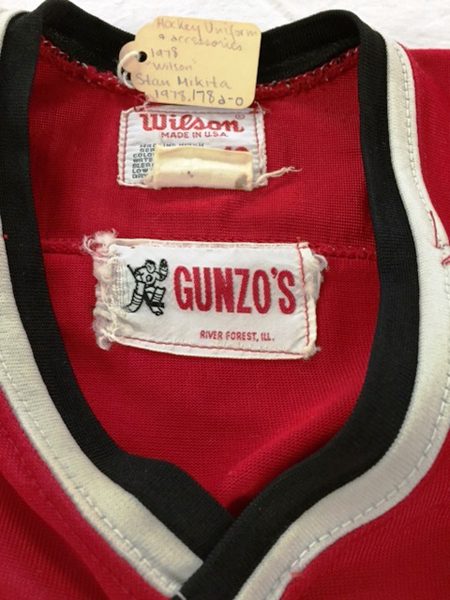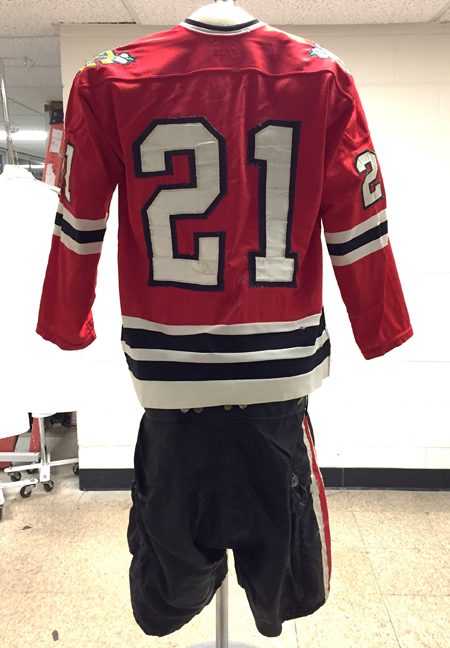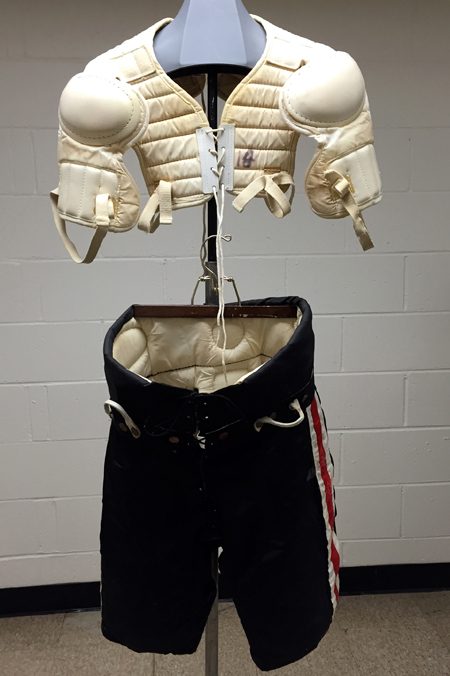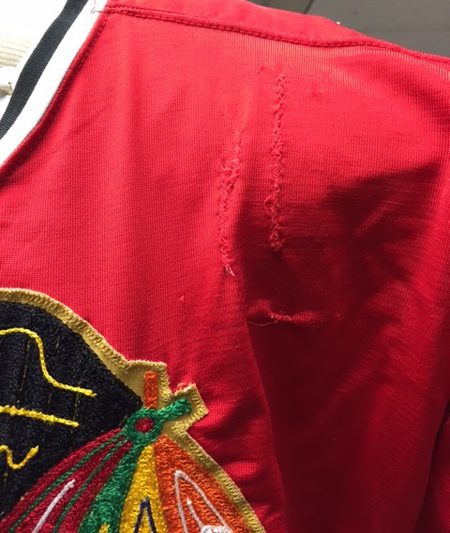In the midst of hockey season, costume collection intern Corie Azem takes a close look at the uniform of a hockey legend.
When the Chicago Blackhawks won the Stanley Cup on home ice on June 15, 2015, the team dedicated that win to former Blackhawks standout and team ambassador Stan Mikita. Mikita played his entire career with the Blackhawks (1958–80), a feat that is especially rare in professional sports today. The Chicago History Museum is fortunate to have one of Mikita’s full uniforms, and a close examination of it gives insight into the game, the player, and the organization.

Hockey uniform, c. 1973–76. Synthetic knit. Wilson/Gunzo’s. United States. Gift of Mr. Bob Pulford. 1978.178a-o. Photographs by CHM staff

A close-up view of the tags inside the jersey. Wilson Sporting Goods Company produced the uniforms, and Gunzo’s was the retailer that outfitted the Blackhawks. Both Chicago-area companies are still in business today.
Mikita’s uniform consists of his red home jersey, pants with suspenders, socks, shin guards, shoulder pads, skates, gloves, and a hockey stick. The jersey has the Black Hawk logo on the chest, tomahawks crossed over the “C” on the shoulders (both of which are chain-stitched, not screen-printed), and white numbers with black trim on the back and shoulders. The NHL would mandate in 1977 that players’ names be added to the back of the jerseys. Mikita’s jersey predates this rule and is estimated to have been worn during the 1973–76 seasons.

The back of Mikita’s jersey with only his number.

A chain-stitched “C” on one of the shoulders.
The jersey has a “fight strap” sewn inside that attaches to the pants, which prevents the jersey from being pulled over the player’s head in a fight. Mikita’s uniform pants have pockets inside for pads at the hips and the quadriceps. The pants also have a built-in pad for the protection of the tailbone. The shoulder pads, made of quilted synthetic fabric and thin plastic panels, are minimal and lightweight, offering limited protection to the back, chest, and shoulders.

The shoulder pads and a view of the padding inside the pants.
Stan Mikita was playing hockey at a time when helmets were optional (they were mandated in 1979) and mouth guards were scarcely used, so those pieces are not included among the list of equipment.
A surprising aspect of the pants and the jersey is the extent to which they were repaired. In several places, on both pieces, holes and tears were mended. Some are machine-stitched and others, hand-sewn. It is unknown who made these repairs, but they certainly represent a much different attitude toward players and sports than is seen today.


Repairs to Mikita’s jersey (top) and pants (bottom).